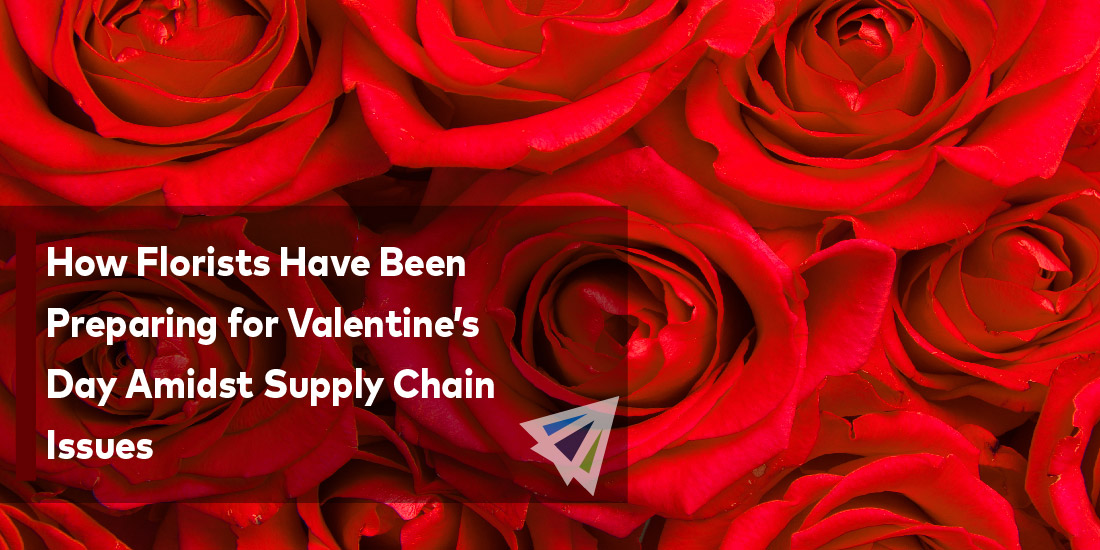How Florists Have Been Preparing for Valentine’s Day Amidst Supply Chain Issues
The floral industry is one of the most active shipping industries out there. Flowers come from all places around the world. They take time to grow, cultivate, package, and ship to appropriate destinations. And unfortunately, for many shippers, their sales are entirely reliant on conditions in the logistics industry. When roads and rails are backed up, they have no way to get their products to their destination for the appropriate season.
As you may have guessed, Valentine’s Day is one of the most active holidays for florists—specifically due to rose shipments. So how is the floral industry looking this Valentine’s Day?
Roses take around 60 days to grow and are grown near the equator. That means there are select few locations that can produce roses in mass quantities. That said, it is imperative that shipping conditions are streamlined for growers in these gardens.
A Look at the Past
In 2018, over 250 million roses were grown and sold around the globe. However, the pandemic had a massive effect on gardens and farms around the world in 2020, and the repercussions are stretching through today. From the economic impact alone, tons of farms, from Kenya to Columbia, were shut down and workers were laid off. In return, floral supply was permanently affected (at least from those specific regions).
Unfortunately, much of the 2020 flower supply was also destroyed as farmers were forced to discard unwanted flowers. The pandemic drastically dropped the demand for roses through the end of the year and stretching into early 2021. But things have been improving as of late.
Industry Recovery
Postponed weddings and celebrations are underway in full swing thus skyrocketing the demand (and prices) for flowers. Farms are maxing out their grow capacity for flowers as they attempt to keep up with the demand, but the disparity between demand and supply is certainly driving prices upwards.
Florists are doing everything they can to get ahead of the competition. Whether that’s by making purchases earlier or arranging transportation solutions far in advance to take advantage of open routes and available vessel capacity.
The issue that florists face the most today isn’t the logistical issues that were posed in the last couple years, but actually the shift in flower demand from floral companies to big-box retailers and national grocery store chains. Nearly 80 percent of rose sales take place in chain grocery stores, and florists are struggling to acquire business. However, it’s expected this year that florists will benefit from the supply disparity, as customers will be forced to look elsewhere as grocery stores run out. In addition, few people in the U.S. will be leaving for the weekend due to Super Bowl Sunday, which could lead to increased last-minute sales.
Contact our team at InterlogUSA for more information regarding this topic. We are happy to field any questions or inquiries you may have with how it can affect your specific situation. Additionally, check out our weekly market updates to stay up-to-date with relevant freight news and developments across the industry.
